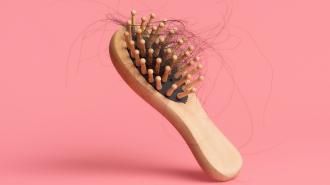A cure for baldness may be taking shape in California labs, where researchers are reprogramming stem cells to successfully grow human hair on animals — but will their efforts translate to people?
The challenge: We’re all born with about 5 million tiny tubes called “hair follicles” in the outer layer of our skin. These tubes contain reservoirs of stem cells that divide and develop into hair cells.
If these stem cells exit the hair follicle or are damaged by aging, disease, or something else, we stop growing hair from the follicle. If that happens to enough follicles, we can notice our hair thinning or bald patches forming.
About 80% of men and 50% of women will experience hair loss during their lives.
Why it matters: No one has found an effective way to reverse this process, and while hair loss isn’t going to harm a person’s physical health, it can have a detrimental effect on their self-esteem.
“When someone [experiencing hair loss] looks in the mirror, often the person they see is someone they no longer recognize,” Sue McHale, a senior lecturer in psychobiology at Sheffield Hallam University, told the Guardian. “It can leave your self-image fractured, dramatically changed.”
Combatting baldness: The loss of stem cells might be a major cause of baldness, but they could also lead to its cure.
Two California-based startups — dNovo and Stemson — are exploring ways to take fat, skin, or other types of cells from patients and reprogram them into hair-growing stem cells in the lab. Those hair cells can then replace the lost or damaged ones in hair follicles.
“[Hair loss] can leave your self-image fractured, dramatically changed.”
Sue McHale
The big picture: Both dNovo and Stemson report using their stem cell tech to grow hair on formerly hairless mice. However, even Stemson’s own CEO Geoff Hamilton admits it’s too soon to say whether the success of these animal studies will translate to people.
“We have seen so many [people] come in and say they have a solution — that has happened a lot in hair, and so I have to address that,” he said at the Global Hair Loss Summit in 2021. “We’re trying to project to the world that we are real scientists and that it’s risky to the point I can’t guarantee it’s going to work.”
If it does work, the impact could be huge as some 80% of men and 50% of women will experience hair loss. But for now, those people will have to rely on existing treatments — or learn to embrace their baldness.
We’d love to hear from you! If you have a comment about this article or if you have a tip for a future Freethink story, please email us at tips@freethink.com.
